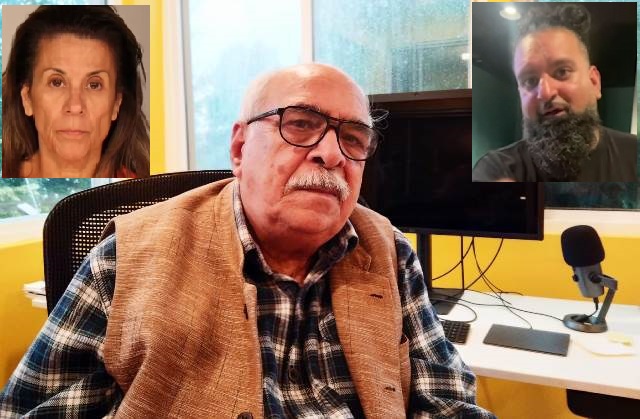Ramsharan Joshi, a journalist, academic and author currently based in Boston (US), says objective use of social media can help discourage racial crimes in the West
Indians have been on the receiving end of hate speech in the US recently. One Indian was viciously abused at a Fremont restaurant, and a group of Indian women in Plano, Texas, went through a similar, terrible experience. It follows a ritualistic pattern faced by Afro-Americans, Blacks, Hispanics and other non-White communities in the US, and also in many parts of the West.
Indeed, it reminds me of my first experience in the Anglo-Saxon world about four decades back. During my maiden encounter with the most highly developed metropolitan city of London in 1983, I, along with Swami Agnivesh, acclaimed liberator of bonded labour, and Swami Indravesh, then a Lok Sabha MP, were passing through a London street. We were suddenly attacked violently – some street kids belonging to the White community attacked us for no reason. They jeered at us with a certain ugly enthusiasm and spat on the three of us. Abuses were showered on us. We had to literally run away from the spot. Seeing us in such a panic, some people of Indian origin rushed and rescued us from further attacks and humiliation. We were told by the locals that this is a routine occurrence.
Returning to the present day’s scenario of September, 2022, a powerful and wealthy aspirant for the apex post of prime ministership of Britain, Rishi Sunak, betrayed his orthodoxy and rigid conservatism in a developed nation like the United Kingdom, by publically worshiping the cow. By performing ‘gau puja’ — what message was he trying to convey to the White people, or the Indians who are now settled in that country, the NRIs? So, where do you draw the line between orthodoxy, modernity racism, and pluralist democracy in the developed and super high-tech world of corporate capitalism? I have been trying to find the answers since July1983, when, as a journalist, I first travelled through Europe and America.

Sitting in a town in ‘New England’ (Boston area) right now, an interesting event is knocking at my mind. My first encounter with the world of Americans dates back to September 1985. I had gone there as a member of the media team accompanying the then prime minister, Rajiv Gandhi. Journalists were housed in a hotel managed by the Tata Group. I noticed a young man of mixed coloured origin, just about 25, was distributing leaflets cautiously to the media persons, not very far from the UN Headquarters. The leaflets advocated racial purity, ultra-nationalism, uni-culturalism, etc. After reading the leaflet, when I questioned his antecedents he slipped out of the media center.
During several visits to this part of the world, I noticed and felt the undercurrents of strong racial discrimination prevalent in the society. Of course, there is no official admission of discrimination based on race, colour and blood, but the dormant reality erupted in the form of the brutal assault on a breathless George Floyd and his consequent death at the hands of White policeman. Certainly, racism seems to have intensified post-Donald Trump in America, despite Barack Obama being elected twice. Despite the massive Black Lives Matter movement.
ALSO READ: The Rise Of Indian Americans
My experiences in Canada are no different from that of America. Although, discrimination is not pronounced in Canada, which, too, is largely a multi-cultural and plural society, but a genuine reconciliation between the ‘First Nation’ (natives) and the White immigrants (or, outsiders), is yet to be realised by the whole of Canadian society.
The unearthing of the graves of hundreds of aboriginal children who were forcefully snatched away in the name of ‘civilizing’ them in various residential schools in Canada from their innocent and helpless parents, by the aggressive and dominant white community, has further reopened the deep wounds the community of the ‘First Nation’ has been suffering for centuries. Natives in Canada, at their annual assemblies held in different parts of the country, unfold the list of failed promises made by the Canadian State to their community. It is a testimony to the simmering scars which refuse to heal.
Coming back to the recent cases of racist attacks on Indians in the US, the victims recorded the event on camera, posted it on social media, and got the culprits arrested. As a journalist, I feel that social media, if handled with sensitivity and objectivity, properly and positively, can play a remarkable role in creating a more humane and just environment. However, in itself it is not enough.
Coloured people are still considered a ‘White man’s burden’. It is the responsibility of an aggressive political economy, that today’s nation-states have been following since the advent of globalization in the 1990s, to eliminate the vicious terrain of racism and other forms of anti-human extremities and discriminations. We shall have to zero in on the political classes that boast of providing people friendly governance in a secular and pluralist democracy, but, actually, fail to implement it on the ground.
As told to Amit Sengupta
